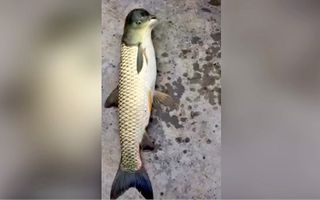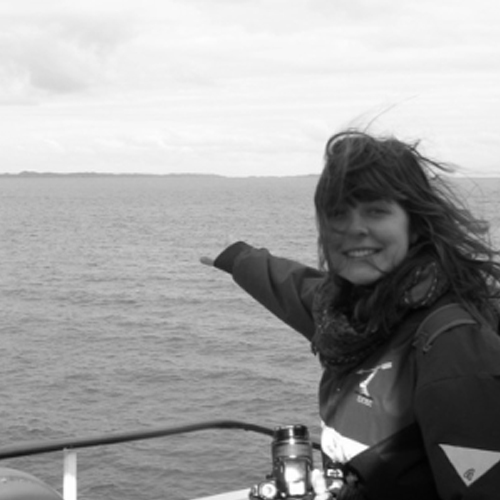What's Up with This 'Half-Fish, Half-Bird' in China?
At least that's how people have been describing this unusual creature since a video of the catch went viral online, showing the strange fish gasping for air as onlookers exclaimed. China's Guizhou Urban Newspaper, which broke the news, identified the fish as the common freshwater carp (Cyprinus carpio). But that hasn't stopped people from speculating that the creature could even be some kind of half-fish, half-bird — with its beak-like mouth and the small fins on its sides giving the appearance of wings.
To put these wild conjectures to rest, however, experts have come up with a more likely explanation: The fish's unusually bulbous noggin, which sort of resembles that of a dolphin or a bird, was probably caused by a developmental problem early in its life. [Real or Fake? 8 Bizarre Hybrid Animals]
"Any talk of a fish-bird is way off the mark," said Andrew Cossins, an animal physiologist at the University of Liverpool in the United Kingdom, who has studied carp. Instead, the creature's shiny dome and beaked, pigeon-like appearance can probably be explained by defective cell growth. "A swelling caused by a deformity in the skeletal system of the head region likely forced the downward tilt of the mouth," Cossins told Live Science.

Identifying the precise trigger of such a protrusion on its head is difficult. "The causation for the deformity can't be determined from a photo or even from looking at the body," Cossins cautioned. But it's reasonable to assume that it would boil down either to a series of genetic mutations, or environmental pollution in the form of waterborne chemical contaminants that could have disrupted the fish's regular cell growth, he said.
For instance, if harmful chemicals had come into contact with the fish at the crucial larval stage of its development, the chemicals could have intercepted the embryo's normal growth, triggering "a cascade of other effects" within its cellular machinery, Cossins said. "It would have to have a very specific effect at a particular stage of the larval growth cycle in order to damage the head region, with the rest of the body looking unaffected."
In the case of this carp, perhaps that developmental interruption warped the normal process of cell division in the head's skeletal structure, leading to accelerated cell production and potentially explaining the carp's inflated crown, Cossins said. But again, it's impossible to say for sure.
"We can't say that it was absolutely caused by a pollutant," Cossins said. He pointed out that a similar phenomenon known as a "pughead deformity" occurs in certain fish species. But researchers are still hotly debating the cause of that phenomenon, exploring dietary change, temperature shifts and chemical contaminants as potential triggers.
Sign up for the Live Science daily newsletter now
Get the world’s most fascinating discoveries delivered straight to your inbox.
In the case of this carp, the fish's prominent crown might also signal the presence of a rapidly growing tumor. However, "it is strange that it is so limited to the head region," Cossins noted — why wouldn't this prominent tumor have spread elsewhere?
He believes that, in any case, the growth probably didn't damage the carp's general quality of life. Aside from the outsize head, it's notable that the creature's body is a normal size for a carp and that it seems to be in healthy condition. If the huge cranial growth had interrupted the fish's central nervous system, Cossins said, the creature may have had problems breathing or feeding, resulting in a smaller body.
"Indeed, a downward-directed mouth might be OK for a bottom-feeder grubbing around in the mud," Cossins told Live Science. "My guess is that it had a decent life."
Despite its oddly shaped head, the fish had something else to be thankful for: the curious anglers reportedly returned it to the water, to swim freely once more.
Originally published on Live Science.

Emma Bryce is a London-based freelance journalist who writes primarily about the environment, conservation and climate change. She has written for The Guardian, Wired Magazine, TED Ed, Anthropocene, China Dialogue, and Yale e360 among others, and has masters degree in science, health, and environmental reporting from New York University. Emma has been awarded reporting grants from the European Journalism Centre, and in 2016 received an International Reporting Project fellowship to attend the COP22 climate conference in Morocco.
Most Popular



